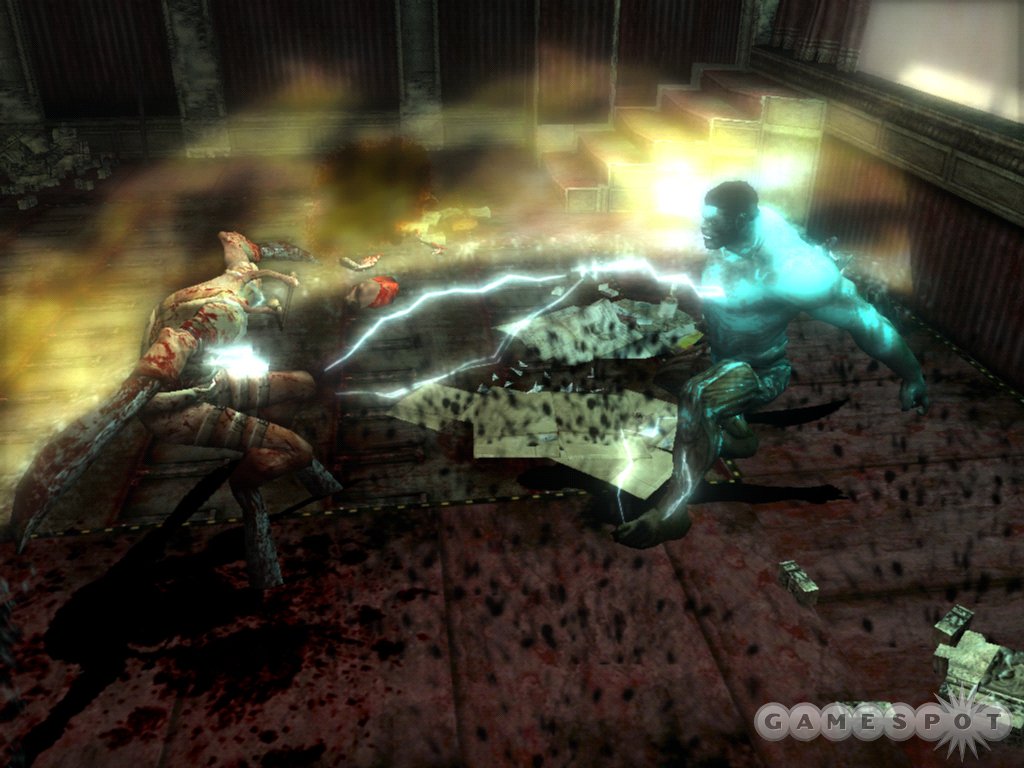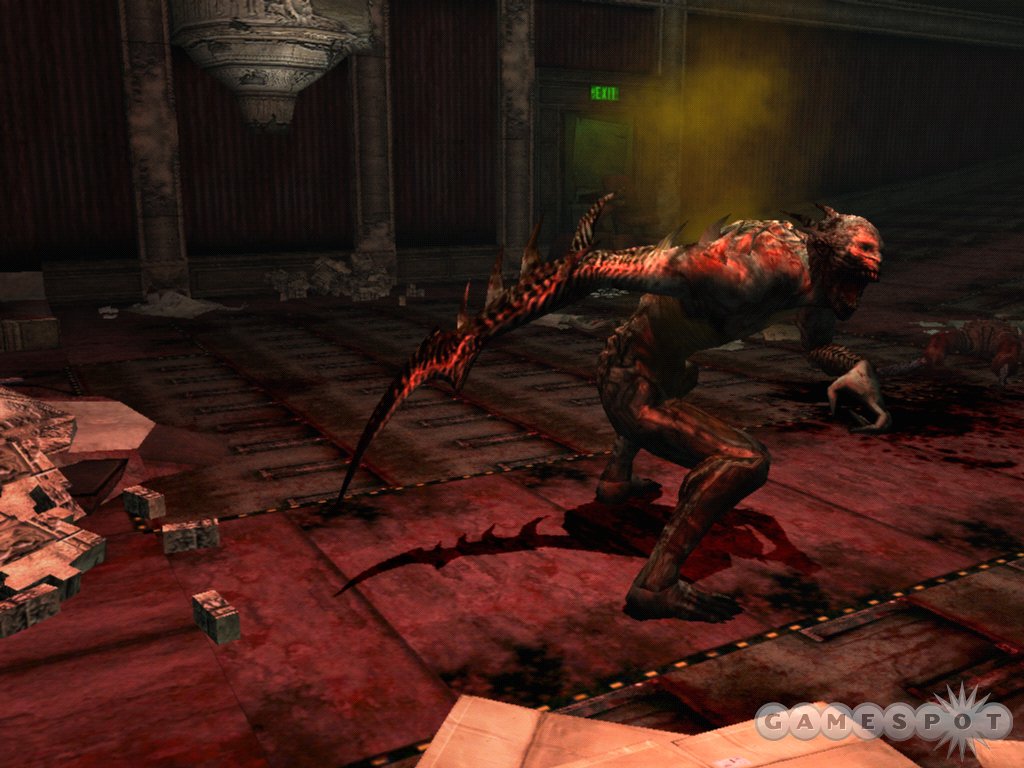The Suffering: The Ties That Bind Designer Diary #1
Creative director and writer Richard Rouse III sheds some light on just how twisted the upcoming sequel to The Suffering is in our first designer diary.
Currently scheduled for release in September, The Suffering: Ties That Bind is the sequel to last year's The Suffering. The upcoming action horror game will pick up right where its predecessor left off, again giving you the power to transform Torque, the game's lead character, into a large monster any time you fill up his "insanity meter." Torque's insanity and the abilities that it affords him are an integral feature of the series. But, as Richard Rouse III explains in our first designer diary, that wasn't always the case.
The Insanity
By Richard Rouse III
Creative Director & Writer
In the original The Suffering and in its sequel, The Suffering: Ties That Bind, one of our key game mechanics is the player's ability to make a surprising and dramatic change into a hideous creature form. Internally, we call this creature form "insanity mode" or "rage mode," as it represents the player character, Torque, losing control of his sanity and/or his anger. Though it may seem quite integral to both the original game and to its sequel, insanity mode was added to the original game fairly late in the preliminary design process. We looked at what we had planned and concluded we needed just a little bit more depth and variety in the gameplay. We wanted to have something that would change up the gameplay style while also tying into the Torque character's unique mental instability. Even though it was a late addition to the core mechanics of the game, looking at it now, the feature seems so integrated into the game that it is a good example of how game mechanics and storytelling can work together. Much as we'd like to take credit for planning the entire game out from the start, in reality the insanity mode feature needed multiple iterations to get it to work as well as it does now. With Ties That Bind we've done a final overhaul of the creature, so that I think we now have a creature form that lives up to the promise of the initial idea.

In terms of the story, the insanity mode plays perfectly into the type of horror storytelling the game specializes in. The creature makes the player guess about Torque's personality and mental health. Is the creature real, or in Torque's head? Why does it look similar to the creatures the player has to fight throughout the game? Is the player actually being "bad" by using it? And we like that it's a mysterious feature, as we want to make the player question what they see in the game, and also to wonder about Torque's connection to the creatures he is fighting. In the conclusion of the first game, the player had to fight the creature form, in essence fighting himself. For Ties That Bind, the insanity mode's connection to the player's story is even more significant, with the creature actually changing its form and its game mechanics based on the moral path the player is on. And in the new game the creature is also integral to the endgame, but in a significantly different way. The story of The Suffering would be very different indeed without insanity mode.
With all its connections to the story, one might think the creature was employed primarily as a storytelling device. But, as I mentioned before, the initial impetus to add insanity mode came out of a desire to change up the gameplay mechanics, to give the player a fully playable "smart bomb" alternate state that would make him approach combat situations differently than when wielding guns. But with the first game, while we felt good about the story-side implementation of the creature, we were disappointed to find that most players didn't actually use the creature to play the game through. A part of this was basic balancing: We all felt the first game was overall too easy. But the root of the problem was that having a melee attack be more powerful than a long-range projectile attack is a very difficult challenge, meaning everything about the insanity mode and his melee attacks has to be extremely impressive to convince players to use it. For Ties That Bind, our mantra has been that the creature form must be "the best weapon in the game." Though this sounds a bit more like a marketing slogan than a part of development vernacular, it has served as our vision statement for this particular feature, helping everyone working on the creature understand just how good the creature needs to be.

The great advantage of making sequels to games is that, beyond just providing a new story and different gameplay scenarios, designers are able to tune and refine the fundamental gameplay mechanics to make the game play significantly better in its new incarnation. The insanity mode in The Suffering: Ties That Bind is a prime example of this. I think we took a good feature and made it great, and we're all eager to hear the fan response to the new creature.
Got a news tip or want to contact us directly? Email news@gamespot.com
Join the conversation